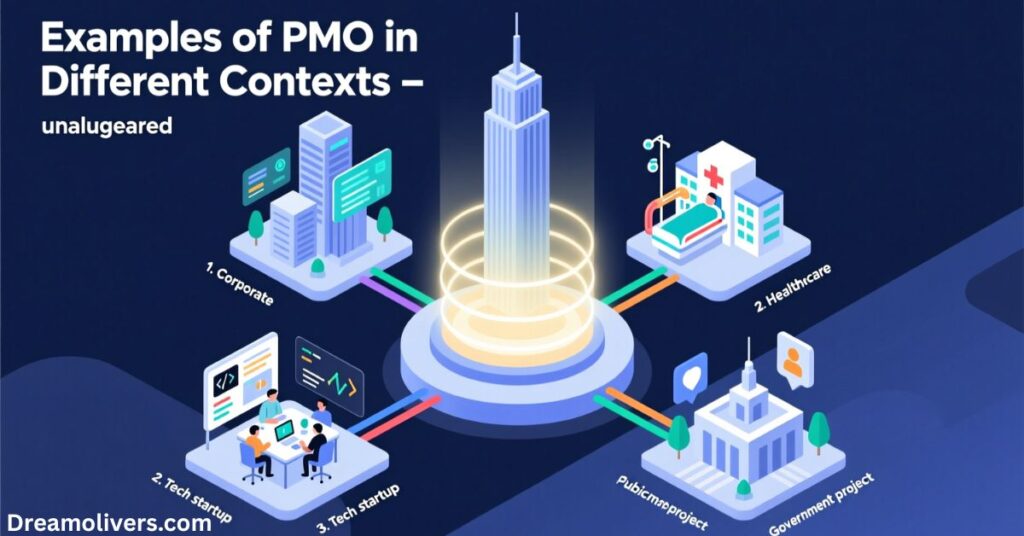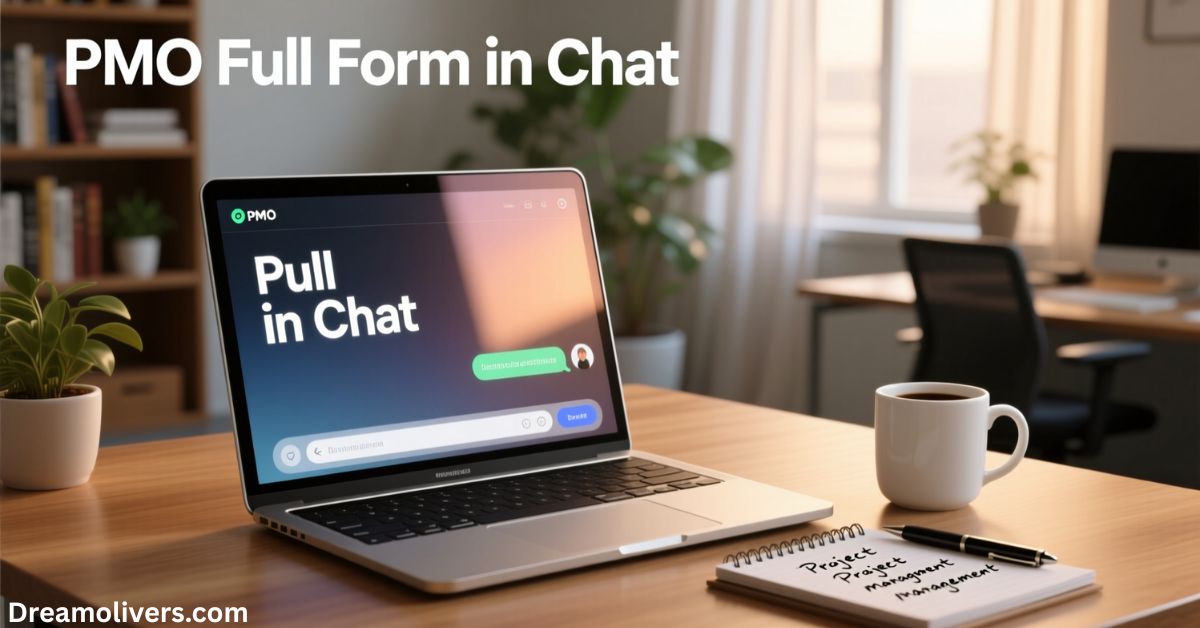In the fast-changing world of texting slang, meanings shift faster than trends on TikTok. One abbreviation that keeps popping up in DMs, group chats, and comments is PMO. If you’ve ever wondered what someone means by “PMO” in a message, this guide breaks it all down for you — with real-world examples and tone variations.
Let’s dive into the PMO full form in chat, explore its contextual meaning, and learn how it adapts across different communication registers from casual slang to professional emails.
What Does PMO Mean in Chat?
In 2026, the PMO full form in chat stands for “Put Me On.”
It’s a slang expression used to ask someone to share information, connections, or recommendations — similar to “Hook me up” or “Fill me in.”
At its core, PMO is about social connection and information sharing. It reflects how modern text messages and social language use are becoming more casual, personal, and direct.
Example:
- Ava: “That playlist you shared yesterday was 🔥.”
- Liam: “Thanks! Want more like that?”
- Ava: “Yeah, PMO to that vibe.”
Here, “PMO to that vibe” (short for Put me on to that vibe) expresses enthusiasm and curiosity, showing a friendly, informal linguistic tone.
PMO and Its Linguistic Background
From a cultural linguistics perspective, PMO evolved from hip-hop and online slang culture. It represents how language evolution shapes communication across generations.
- PMO (Abbreviation): Put Me On
- Origin: African-American Vernacular English (AAVE)
- Tone (casual, polite, professional): Typically casual or friendly
- Pragmatic use: Request for inclusion or information
This abbreviation exemplifies semantic variation, where a phrase like “put me on” can mean anything from introduce me to someone to share that link. Its meaning shifts based on discourse context and intent interpretation.
PMO in Different Communication Registers
Language operates across a spectrum of registers — from formal to informal. The way you use PMO depends heavily on contextual meaning, tone sensitivity, and your relationship with the recipient.
1. Casual (Friends / Social Media)
Register: Informal
Linguistic tone: Playful, friendly
Example on Instagram DM:
- Mia: “You’ve been posting killer outfit inspo lately 👗🔥”
- Zara: “Haha thanks!”
- Mia: “PMO where you shop 👀”
Here, PMO means “Tell me where you shop,” showing curiosity and enthusiasm.
2. Semi-Formal (Peer-to-Peer Communication)
Register: Neutral / Conversational
Linguistic tone: Polite but relaxed
Example on group chat:
- Chris: “Hey guys, I heard about a remote internship.”
- Jordan: “Sounds interesting! Loop me in when you get details.”
“Loop me in” serves as a semi-formal alternative to PMO, reflecting how word choice adapts to different social language dynamics.
3. Professional (Work Emails)
Register: Formal or Semi-Formal
Linguistic tone: Respectful, clear
Example in an email:
Subject: Marketing Collaboration Update
Hi Emily,
I saw your note on the new partnership. Could you introduce me to the PR team so I can coordinate deliverables?
Best,
Daniel
Here, “Could you introduce me” replaces PMO in a professional register. It maintains communication clarity, respect, and professionalism, avoiding casual slang.
PMO vs Other Common Abbreviations
To better understand how PMO functions, let’s compare it with a few related abbreviations and terms.
| Abbreviation / Phrase | Full Form / Meaning | Tone | Usage Example |
|---|---|---|---|
| PMO | Put Me On | Casual | “PMO to that new app everyone’s using.” |
| FOMO | Fear of Missing Out | Casual | “I didn’t go to the party, now I’ve got FOMO.” |
| Hiatus | Pause or break (formal) | Professional | “I’m taking a brief hiatus from social media.” |
| Loop me in | Semi-formal variant | Neutral | “Loop me in when you share the doc.” |
| Hook me up | Informal synonym | Playful | “Hook me up with the details!” |
This shows semantic contrast (PMO vs Hiatus) — one is informal and social, the other formal and detached.
The Pragmatics of PMO: How Context Changes Meaning
Text message pragmatics play a vital role in understanding how abbreviations like PMO function. The meaning can shift depending on the situation, tone, and intent.
| Context | Message | Intent Interpretation | Tone |
|---|---|---|---|
| Social | “PMO to that new track.” | Curiosity, Playfulness | Friendly |
| Professional | “Could you introduce me to your contact?” | Respectful Inquiry | Polite |
| Neutral | “Fill me in on the update.” | Request for Information | Neutral |
| Casual | “Plug me in on what’s new.” | Enthusiastic Request | Relaxed |
Each phrase carries different language nuance and reflects distinct speech acts such as a request or inquiry.
Read Also: Goodfella Meaning: What It Really Means
How PMO Reflects Digital Communication Trends
Modern digital communication trends show a clear shift toward conversational language and informal vs formal speech blending. Abbreviations like PMO and FOMO embody this digital age language shift — where brevity, tone, and context matter more than grammar.
Why PMO Works So Well Online
- Short and catchy: Ideal for social media posts or DMs.
- Emotionally expressive: Conveys friendliness and enthusiasm.
- Adaptable: Fits both casual expression and semi-formal conversation.
- Reflective of social culture: Mirrors how people use code-switching between online and offline tones.
This adaptability highlights social language use and how generational slang (Gen Z communication) continues to redefine the boundaries between casual and professional interaction.
Examples of PMO in Different Contexts

Let’s see how PMO changes based on tone and register:
🗨️ Texting Example (Casual)
Jenna: “PMO to that meme page you follow 😂”
Meaning: “Share that page link with me.”
📧 Work Email (Professional)
To: alex@bizgrowth.com
Subject: Client Onboarding InquiryHi Alex,
I heard you’re coordinating the client outreach initiative. Could you introduce me to the onboarding lead? I’d love to collaborate.
Best,
Rachel
💬 Group Chat (Friendly)
Ethan: “Who’s got the best food spots in Chicago?”
Ryan: “I do! PMO if you’re visiting soon 🍕”
📱 Social Media Comment
“Your playlist is 🔥🔥 PMO that vibe!”
Each setting demonstrates context-driven language interpretation and how tone sensitivity adjusts word choice.
The Broader Linguistic Picture
From a linguistic / semantic standpoint, PMO represents a fusion of pragmatic use and language evolution. It encapsulates:
- Discourse context: Social request
- Speech act: Friendly inquiry or invitation
- Intent interpretation: Desire for inclusion or shared experience
- Register: Informal, semi-formal depending on usage
Moreover, PMO symbolizes how language nuance thrives in digital spaces, balancing communication clarity with creative expression.
When NOT to Use PMO
Despite its popularity, knowing when not to use PMO is equally important.
Avoid using PMO in:
- Formal business proposals
- Official memos or corporate reports
- Academic correspondence
In these cases, opt for polite alternatives like:
- “Could you introduce me” (professional register)
- “Please share the details” (neutral phrasing)
- “Would you mind connecting me” (polite expression)
Maintaining linguistic appropriateness helps preserve your professional credibility while ensuring communication clarity.
The Takeaway
The PMO full form in chat (2026) — “Put Me On” — reflects the vibrant blend of social language dynamics, texting culture, and digital communication etiquette.
It’s more than just an abbreviation; it’s a linguistic symbol of connection, curiosity, and enthusiasm in the digital era. Whether you’re chatting on Instagram, replying on Snapchat, or sending a work email, understanding tone, context, and register ensures your message lands perfectly.
So next time someone says, “PMO,” you’ll know exactly how to respond — whether it’s a casual “Sure, I got you!” or a polished “I’ll introduce you to the team.”
Language evolves, but clarity and connection never go out of style.

DreamOlivers, guided by Tina Hudson, is a spiritual space for inner peace and growth. Offering profound insights, it helps you connect with your higher self. Embrace wisdom and inspiration for a balanced, fulfilling life.

